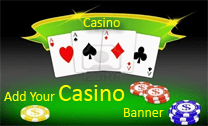Two-up (also known as swei) is a gambling game, and one of Australia's many contributions to the world of gambling (another being the totalisator).
Rules of the Game
The game is conducted in a flat circle of approximately 20 feet (6 metres) or larger. The only equipment required (aside from materials for tracking bets) is two coins (by tradition pre-decimal pennies), and a flat piece of wood called the "kip" approximately 8 inches in length which has holes carved in it to fit the coins neatly but loosely enough for the coins to come out when tossed.
The game is run by a "boxer", who calls the first "spinner" (one of the players around the circle) in to toss the coins. The spinner wagers an amount of their choice on either "heads" or "tails". Other players around the ring can then also bet on either "heads" or "tails".
Once all bets are taken, the boxer calls "no more bets", and the player tosses the coins in the air using the kip. To be a valid throw, they must go above the head heigh of the spinner, be rotating sufficiently and land entirely in the ring - if they do not the boxer calls "barred" and the throw is retaken. Ideally the call must occur before the coins settle.
If the coins land both on the same face, the round ends non-spinning players bets are paid off, with people who bet on the same face as that landed winning. A new round of non-spinner bets is then taken before the spinner throws again.
If the coins come up with one tail and one head, the spinner spins again. If 5 "odds" come up, all players lose and a new spinner is selected.
If the spinner throws his nominated face three times before either 5 "odds" being thrown in a row, or a spin with both coins being the opposite face, the spinner wins and is paid at 7.5 to 1 (in most modern games).
History
The exact origins of the game are obscure, but it seems to have evolved from "pitch and toss", a gambling game involving tossing a single coin into the air and wagering on the result of the toss which was popular amongst poorer English and Irish citizens in the 18th century. The prediliction of the convicts for this game was noted as early as 1798 by the colony's first Judge Advocate, as well as the lack of skill and consequent losses at it.
There is evidence to suggest that pitch and toss had evolved into two-up, using two coins by the 1850's, and the game was played on the goldfields of the eastern states, and spread across the country with subsequent goldrushes elsewhere in Australia. As time passed, increasingly elaborate illegal "two-up schools" grew around Australia, to the consternation of authorities but in fact with the assistance of corrupt police officers.
The game was played extensively by Australia's soldiers during World War I, and games of two-up at which an even blinder official eye was cast became a regular part of ANZAC Day celebrations for the returned soldiers.
The games continued illegally for most of the 20th century throughout Australia, exclusively involving men and usually only Anglo-Australian men.
Legal two-up arrived in Australia with its introduction as a "table" game at the new casino in Hobart in 1973. Laws were subsequently passed legalising two-up on Anzac Day and also legalising it at several two-up schools in outback towns (mainly as a tourist attraction). Two-up is now played at many of Australia's casinos, but it is generally dropping out of the culture with the mainstream adoption of slot machines and most young Australians have barely heard of the game. It is also played at Returned Serviceman's Leagues on Anzac Day.



